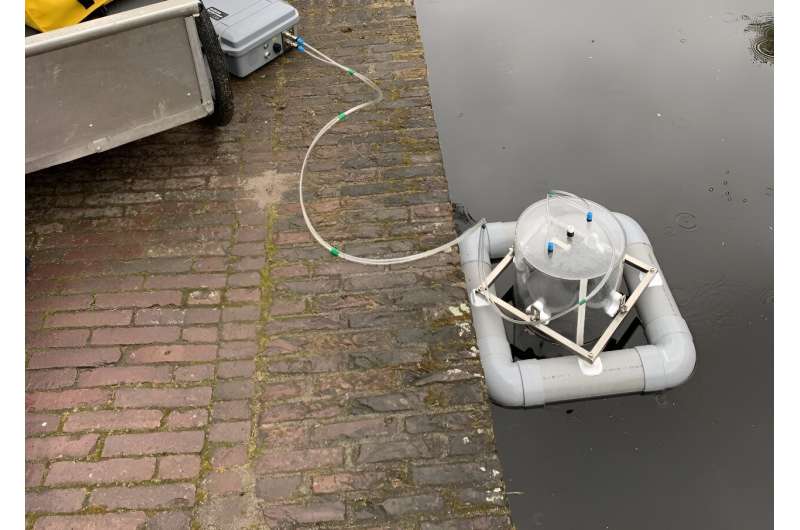This article has been reviewed according to Science X's editorial process and policies. Editors have highlighted the following attributes while ensuring the content's credibility:
fact-checked
trusted source
proofread
Methane emissions from Dutch canals underestimated, researcher finds

Researchers have so far underestimated methane emissions from canals in five major Dutch cities. That is the conclusion of microbiologist Koen Pelsma, who will defend his Ph.D. thesis on this topic at Radboud University on 13 December.
In calculations of methane emissions from water, far too little is known about emissions from urban waters such as canals, says researcher Koen Pelsma. "Research focuses primarily on agricultural waters, which is obviously very important, but other waters, such as city canals, are sometimes forgotten in the process. We make certain assumptions about these waters, but until my research, the Dutch canals had never been measured."
As part of his research, Pelsma measured methane emissions from the canals of Amsterdam, Zaandam, Leiden and Zwolle using a "core sampler" (a kind of plastic tube that makes it possible to collect a sample of water and soil) and a floating measuring chamber. He collected soil samples and examined them in the lab: Which microbes live in the canals and what exactly are they doing there?
All the canals were found to be different, but all contained methane-eating microbes. "This means there is methane in the canals, otherwise those microbes wouldn't be there," the researcher explains. In the process, he also measured the methane emissions and assessed water quality, leading him to conclude that the canals of five of the six cities studied were releasing methane.
"And we did not even measure the bubbles you sometimes see rising up to the surface in ditches and canals. People think that these are produced by fish, but it's actually methane. And those bubbles are probably responsible for much of the methane emissions."
For his research, Pelsma also scraped some of the slime layer (biofilm) you see on the walls of quay sides. "If you look at 17-century paintings, you can see that there was already a biofilm on the quay walls at the time. So we've known for a long time that it's there, and yet it had never been investigated." In the biofilm, the microbiologist also found methane-eating bacteria.
More research is needed to map where the methane in the canals comes from, and how we can reduce these emissions. "Canals are very specific environments. There is no bed, there is no bank, there are steep walls made of wood, stone or concrete, and the flow is also completely different from, say, a river or a stream. Boats sail through it, constantly stirring up life on and under the water."
"Of all small surface waters (i.e., not rivers and lakes), 12.5% are urban. We do not know at present what the emissions from those waters are."
According to Pelsma, too many assumptions are made about emissions from canals, but there has been no research into the actual situation. "And that while canals are right on our doorstep. We go all the way to lakes in Greenland to measure methane, but forget about our own backyard."
Provided by Radboud University




















